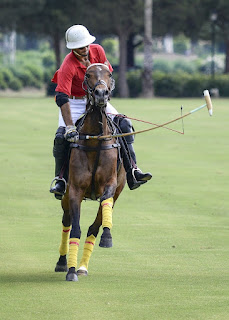In a traditional polo match, a small, hard, and durable ball made from either wood or high-impact plastic is used. The ball used in polo is not a living animal but rather an inanimate object specifically designed for the sport.
Historically, the earliest polo balls were made from materials like bamboo or willow root, which were carefully carved and shaped into a sphere. These wooden balls were then covered with leather or animal hide to protect them and improve their durability. However, as the sport evolved and modernized, the wooden balls were replaced with plastic balls, which proved to be more consistent in shape, weight, and performance.
Today, the standard polo ball is made of high-density plastic, which ensures its durability during the fast-paced and intense gameplay. The modern plastic balls are designed to be lightweight enough to be easily maneuvered by the players but robust enough to withstand the force of hard mallet strikes and fast-paced play.
Polo balls come in different sizes, typically ranging from approximately 3 to 3.5 inches in diameter. The size of the ball can slightly vary depending on factors such as the level of play and the preferences of the players and organizers.
As an integral part of the game, the polo ball is crucial for gameplay, and players use their mallets to hit the ball, aiming to score goals by getting it through the opposing team's goal posts. The small size and fast movement of the ball demand high levels of skill and precision from the players, as they must control it while riding their ponies at full speed.
In summary, the ball used in polo is a small, hard, plastic sphere that replaces the earlier wooden balls. Its design and construction are critical to the game's fluidity and excitement, making it an essential component of the thrilling and captivating sport of polo.
Photo: Pixabay (free)

No comments:
Post a Comment
Thanks for your comment.